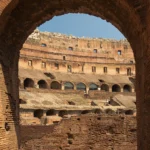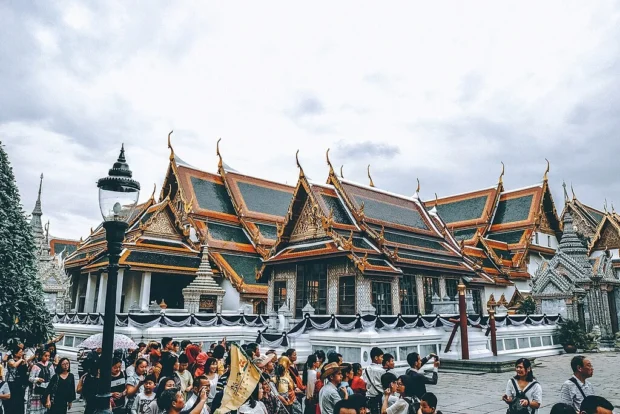Bangkok is a city where modern energy meets ancient beauty, and no place captures this dance better than the Grand Palace. Situated in the heart of Thailand’s capital, this iconic complex offers a deep dive into the country’s royal heritage, art, and spirituality. Whether you’re captivated by intricate architecture, rich cultural tales, or vibrant local flavors, the Grand Palace is a must-see destination that promises memories painted in gold and history. This guide will lead you through directions, visitor insights, fascinating backstories, and practical tips to make your visit seamless and enriching.
Table of Contents
Getting to the Grand Palace with Ease
The Grand Palace’s location along the Chao Phraya River makes it accessible by several means of transport. From the city center, the easiest route is often by river taxi, giving you a refreshing view of Bangkok’s waterside life as you approach this historic site.
- River Taxi: Board at Sathorn Pier, near the BTS Saphan Taksin station. Take the Chao Phraya Express Boat northbound and get off at Tha Chang Pier, right next to the Grand Palace entrance.
- Bus: Local buses like numbers 1, 25, and 44 stop close to the palace. It’s budget-friendly but can be slow in traffic.
- Taxi or Grab: Convenient for direct access from the airport or hotels, but beware of Bangkok’s often busy roads.
- Walking: If you stay near the Old City or Khao San Road, a pleasant walk along the riverside paths is an excellent way to arrive, feeling the city’s pulse before stepping into royal history.
A Glimpse into the Palace’s Rich Heritage
Founded in 1782 during the reign of King Rama I, the Grand Palace was home and administrative heart for the Thai monarchy for over 150 years. This sprawling complex blends traditional Thai architecture and Western influences in a unique harmony of styles. The dazzling spires, intricate murals, and golden statues all tell stories of belief, power, and artistic mastery. From the revered Temple of the Emerald Buddha (Wat Phra Kaew) nestled within, to the many halls where royal ceremonies once unfolded, every corner whispers legends and royal grandeur.
The Emerald Buddha’s Mystical Presence
This tiny but precious statue carved from jade is considered Thailand’s spiritual protector. It’s housed in a throne room adorned with kaleidoscopic murals, each displaying tales from the Ramakien, Thailand’s epic saga. Witnessing the Emerald Buddha’s ceremonial robe changes by the King during seasonal festivals offers a fascinating insight into Thailand’s monarchy and religion intertwined.
Planning Your Visit: Best Times and Visitor Tips
To truly savor the experience, plan your visit early in the morning when the palace opens at 8:30 AM. This is when the light catches the gilded walls just right, and crowds are still sparse, allowing peaceful wandering. Weekdays are preferable to weekends, as local visitors tend to flock on Saturdays and Sundays.
After exploring the Grand Palace, spend time at Wat Phra Kaew to experience Thailand’s sacred art and spiritual heart within the palace grounds.
- Wear respectful attire: shoulders and knees must be covered; bring a shawl or long pants if you’re not already dressed conservatively.
- Allow at least 3 hours; the complex is massive, and there’s much to absorb.
- Photography is allowed in most areas but is prohibited inside the Emerald Buddha Temple. Look for signs and be respectful.
- Bring water and wear comfortable shoes; you will walk on tiled and sometimes uneven surfaces.
- Guided tours: Hiring a knowledgeable guide or joining a small group tour enriches your understanding with stories and details you’d otherwise miss.
Reservation and Entry Essentials
Entry to the Grand Palace requires a ticket, currently priced around 500 Baht for foreigners (check official sources for updated fees). Tickets can be bought at the entrance, but during busy periods, online booking is a wise choice to avoid long lines.
It’s important to note that no large bags, tripods, or smoking are allowed inside the complex. Security checks at the gates are thorough but efficient.
For the most accurate and official information about tickets, opening hours, and special events, visit the Grand Palace’s official site.
Nearby Accommodation and Culinary Delights
Staying close to the Grand Palace and the historic district adds charm to your visit. Numerous guesthouses and mid-range hotels offer easy access within walking distance or a brief taxi ride. The area buzzes with affordable eateries serving up flavors you’ll want to savor.
Local food spots serve Thai classics such as Pad Thai, Som Tum (papaya salad), and Mango Sticky Rice, bursting with textures and aromas that dance on your palate. Just a short walk from the palace, riverside stalls and markets invite you to sample these delights amid bustling Bangkok life.
Local Culture and Hidden Stories Around the Palace
Beyond the official grandeur, street vendors nearby offer traditional crafts and snacks, perfect for a leisurely exploration after the palace tour. Keep an eye out for vendors selling hand-painted fans or tiny Buddha amulets, souvenirs carrying deeper meanings to Thai people. Legend whispers that the Grand Palace site was once home to mythical serpent kings, guarding the city from shadows.
I’ve always been fascinated by the way tourists often miss the little temple called Wat Pho, just down the road, famed for the Reclining Buddha and Thai massage tradition – a serene contrast and perfect complement to the palace’s splendor.
Final Reflections on the Grand Palace Visit
Visiting the Grand Palace is more than just seeing a landmark; it’s stepping into a canvas of royal devotion, artistic mastery, and cultural heartbeat. The shimmering gilded structures, cooling breeze off the Chao Phraya River, and vibrant street life paint an unforgettable portrait of Bangkok’s soul.
Take your time, absorb the details-the buzzing crowds fade away when you pause to look, really look, at the patterns, stories, and lifestyles woven into every brick and brushstroke here. This journey into Thailand’s regal past will leave you with stories to share and a deeper understanding of Bangkok beyond the modern façade.

Explorer of historic places and culinary traditions, combining landscape appreciation with food culture.
- Grand Palace Bangkok (Unsplash) by Hanny Naibaho hannynaibaho on Wikimedia Commons – cc0
